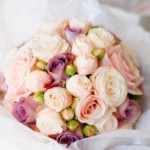Summer Delight: Sweet Corn

For traditional row planting, a minimum of 7 rows are required for adequate pollination. If planting more than one variety of corn, they need to be placed in different areas of the garden to prevent cross pollination.
Planting needs to start after the last frost date in your area. You can warm the soil by laying black plastic over the planting area for a week. Because corn is a large plant, it requires plenty of rich soil. Adding phosphate, lime and well rotted compost will help speed germination.
Plant the seeds 1-2″ deep and about 6″ apart in rows or blocks. Once the seedlings reach 6-12 inches high, side dress with manure and compost. This will give the plants a healthy nitrogen boost. I also like to create watering channels around 10 inches out, alongside the rows for irrigating my corn.. This helps avoid displacing the soil around the root systems.
Corn can also be planted in grids to conserve space and increase yields. here is a tip from Garden-tips on corn grids: For small spaces and maximum yields, try planting your corn in 12″ grids. Each 4×8 section will produce 30 ears of corn. Plant every 10 days, for continuous supply. You will have to hand pollinate. Just gently bend the young tassels down and shake the pollen loose-Don t do this on a windy day. Or gently insert fingers into tassels and walk down the rows, touching the young plants.
Corn earworm is a common corn pest. To control corn earworm take 20 drops of mineral oil and place on the cornsilk 3 days after they first appear. After harvesting is complete, till the stalks under or cut up and dispose in the trash to prevent further infestations.
Earwigs can be dealt with by placing rolled up newspaper or cardboard tubes near the rows. In the morning up end the tubes into a bucket of soapy water.
Corn varieties range from old standards like Golden Bantam to the new Honey Sweet or Triple Select. If you like a super sweet corn, these are wonderful high sugar varieties. Yum!
Corn should never be picked until the water is boiling or the BBQ is hot. This way you don’t lose any of that wonderful sweetness and flavor.







